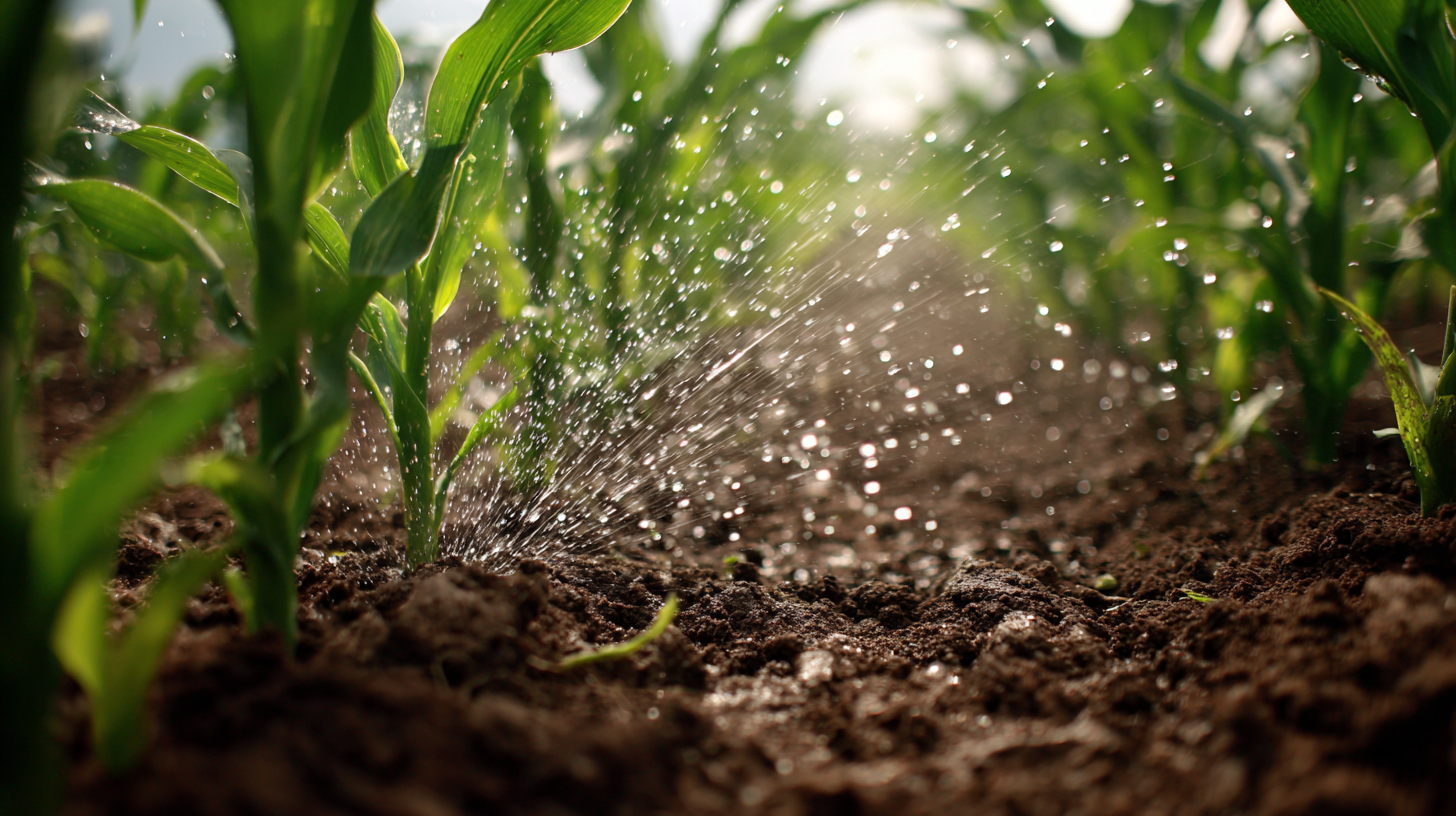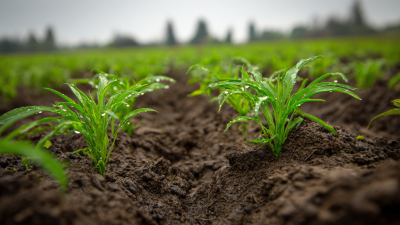As the demand for sustainable agricultural practices continues to rise, the significance of nutrient management in crop production becomes increasingly crucial. Among the various approaches to enhance plant growth, the use of Water Soluble Micronutrient Fertilizers stands out as a highly effective strategy. These specialized fertilizers provide essential micronutrients in a readily available form, ensuring optimal nutrient uptake by plants. Recent advancements in agricultural science have unlocked the potential of these fertilizers, revealing their impact on improving plant health, increasing yield, and promoting resilience against environmental stressors. This article delves into the science behind Water Soluble Micronutrient Fertilizers, highlighting the best practices for their application and the tangible benefits they offer to modern crop management. By exploring the intricate relationship between micronutrient availability and plant performance, we will uncover how these fertilizers serve as a vital tool in unlocking the full potential of crops for a sustainable future.

Micronutrients play an increasingly vital role in plant growth and development, as recent studies emphasize their importance in enhancing crop yields and nutritional quality. Particularly, zinc (Zn) and iron (Fe) have been identified as critical micronutrients for crops like mungbean (Vigna radiata L.). Research shows that foliar applications of these micronutrients can significantly boost growth, yield, and overall nutrient content, demonstrating their essential contribution to agricultural productivity. The efficacy of these methods aligns with a growing trend towards precision agriculture, where targeted nutrient delivery maximizes plant health and resource efficiency.
The shifting landscape of agriculture necessitates a reevaluation of nutrient management strategies, highlighting the need for educated collaboration between retailers and growers. Enhanced understanding of micronutrient interactions and uptake mechanisms is essential, as plants face multiple nutrient stresses in their environment. Innovative techniques, such as integrating cytokinin effects and amino acid supplementation, are revolutionizing how we approach plant nutrition. With hybrid crops increasingly demanding a robust micronutrient profile, industry experts advocate for the adoption of modern fertilization technologies to ensure sustainable crop growth in the face of escalating challenges.
 Water soluble micronutrient fertilizers have gained significant attention in modern agriculture due to their ability to enhance plant growth and development. These fertilizers supply essential trace elements, such as zinc, iron, and manganese, that are critical for various physiological functions in plants. According to a report by the Food and Agriculture Organization (FAO), the efficient use of micronutrients can increase crop yields by an average of 15%, reflecting their importance in maximizing agricultural productivity.
Water soluble micronutrient fertilizers have gained significant attention in modern agriculture due to their ability to enhance plant growth and development. These fertilizers supply essential trace elements, such as zinc, iron, and manganese, that are critical for various physiological functions in plants. According to a report by the Food and Agriculture Organization (FAO), the efficient use of micronutrients can increase crop yields by an average of 15%, reflecting their importance in maximizing agricultural productivity.
The benefits of incorporating water soluble micronutrient fertilizers extend beyond just yield improvements. Research indicates that these fertilizers can improve nutrient uptake efficiency, leading to healthier plants with stronger resistance to diseases and environmental stresses. A study from the International Fertilizer Association (IFA) highlights that crops treated with water soluble micronutrients showed a 20% increase in overall nutrient use efficiency compared to those that did not receive these additives. This efficiency is crucial in promoting sustainable farming practices, ultimately reducing the environmental impact associated with excessive fertilizer use.
In addition to improving yields and efficiency, water soluble micronutrient fertilizers facilitate precise application techniques, allowing for targeted nutrient delivery. With the rise of precision agriculture, farmers can now utilize technology to assess soil nutrient levels and apply micronutrients accordingly. This not only enhances the micronutrient availability for plants but also minimizes wastage, aligning with the objectives of modern agronomy to optimize resources while boosting crop quality and sustainability.
When selecting the right water-soluble micronutrient fertilizer, it is essential to understand the specific needs of your plants and the soil conditions. According to a report by the International Fertilizer Association, nearly 30% of the world’s soil is deficient in key micronutrients, such as zinc, iron, and manganese, which are vital for plant health and productivity. A well-balanced micronutrient solution can significantly improve nutrient availability, leading to enhanced growth and yield. For instance, plants that receive proper zinc fertilization can increase their production by up to 50%, showcasing the profound impact of micronutrients.

Moreover, when choosing a fertilizer, consider the form and formulation available. Water-soluble fertilizers allow for quick absorption and utilization by plants, making them ideal for fast-growing crops. A study by the Fertilizer Institute found that water-soluble micronutrient applications can reduce deficiencies in crops by up to 70% compared to traditional fertilization methods. It’s crucial to look for products tailored to the specific crops you are cultivating, as the optimal micronutrient mix will vary. Conducting soil tests can help identify deficiencies and guide your choice in selecting a tailored water-soluble micronutrient fertilizer that meets the unique requirements of your plants.
The utilization of water-soluble micronutrient fertilizers has revolutionized crop nutrition, allowing farmers to enhance micronutrient uptake significantly. Application techniques play a vital role in maximizing this uptake. Research conducted by the International Fertilizer Association indicates that applying micronutrients via fertigation or foliar feeding can increase their absorption rates by up to 30% compared to soil application methods alone. This is particularly crucial for addressing deficiencies in key micronutrients such as zinc, iron, and manganese, which can drastically affect crop yields.
Optimal timing and methods also impact the effectiveness of these fertilizers. For instance, studies show that applying water-soluble micronutrients during critical growth stages—when crops are most responsive—can lead to a 20% increase in yield. Moreover, integrating advanced technologies such as precision agriculture tools allows for targeted applications, ensuring that nutrients are delivered precisely where and when they are needed. Reports from agronomic research highlight that farmers who adopt these modern application techniques not only see improved crop health but also a more sustainable approach to nutrient management, minimizing waste and environmental impacts.
Water-soluble micronutrient fertilizers have gained recognition for their effectiveness in enhancing crop nutrition, particularly in precision agriculture. These fertilizers allow for targeted and efficient delivery of essential nutrients, improving plant health and yield. In an era where water scarcity presents significant challenges, especially in regions like China, the integration of water-soluble micronutrients with precision application methods becomes crucial. Innovations such as bio-inspired superabsorbent hydrogels are at the forefront of this development, promoting efficient water retention and reducing irrigation needs while ensuring optimal nutrient availability.
In addition, the advancements in integrated modeling of water, soil erosion, and nutrient dynamics enable farmers to better evaluate the effectiveness of these fertilizers within their specific environmental contexts. By leveraging these technologies, farmers can monitor and adapt their practices to achieve sustainable agricultural outcomes. The coupling of water and fertilizers not only enhances soil health but also addresses the pressing concerns related to nutrient runoff, thereby contributing to a more sustainable agricultural framework that promotes responsible resource management.
| Micronutrient | Role in Plant Growth | Application Rate (kg/ha) | Effectiveness (%) | Recommended Crops |
|---|---|---|---|---|
| Zinc (Zn) | Promotes leaf expansion and enzyme activity | 5-10 | 85 | Corn, Wheat, Soybeans |
| Iron (Fe) | Essential for chlorophyll synthesis | 3-6 | 90 | Vegetables, Fruits |
| Manganese (Mn) | Involved in photosynthesis and respiration | 2-5 | 80 | Rice, Citrus |
| Copper (Cu) | Aids in photosynthesis and lignin synthesis | 1-2 | 75 | Fruit Trees, Grapes |
| Boron (B) | Important for cell wall formation and reproductive growth | 0.5-1 | 88 | Vegetables, Nuts |






